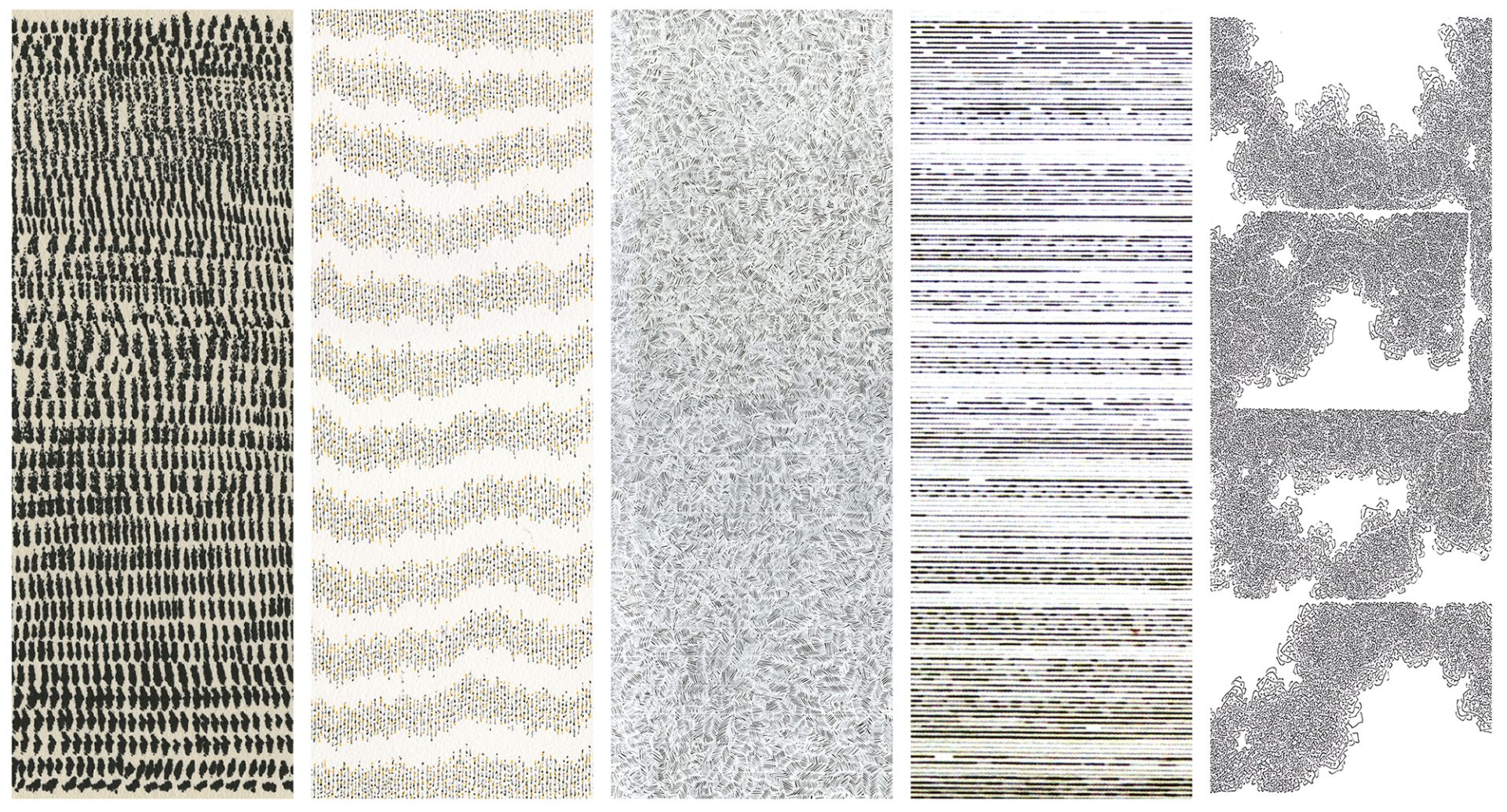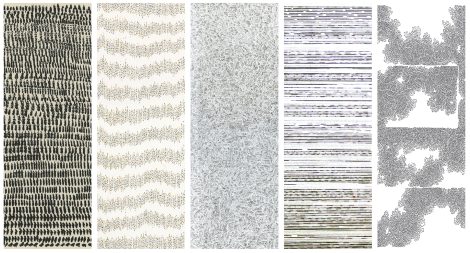
OPENING
FINISHING
The silent adventure of intervallic spaces
Now, it’s not what I paint that matters, but what I don’t paint.
Simon Hantaï
It was while discovering the drawings of Frank Vigneron exhibited in the Espace ODRADEK some time ago that I came up with the project of this exhibition whose title is a sentence by Rainer Maria Rilke: The silent adventure of intervallic spaces. That means, according to my interpretation, that the games of “white” (or very clear) spaces are breaths, silences, “emptiness” which, even if the colored or darker surfaces they run through are more important, remain prominent.
André Lambotte
No-thing to see
This exibition aims at presenting the five artists who accepted our invitation to make the void appear and visible to us. We are thereby immediately confronted with a paradox, “there is nothing to see” except alignments, pages of drawings, sequential lines, repetitive notation or a dance of small jams, leading us out of the known and the intelligible.
Kiran Katara, André Lambotte, Albert Palma, Jacques Pourcher and Frank Vigneron defy the classical stakes of representation to lead us into a practice of intervallic spaces. We are no longer maintained within the railings of the distinction subject-object, of the binary cleavage nature-culture, or of the separation void-full.
All five have, for a long time already, abandoned the limits of the principle of identity and differentiation. They lead us by their know-how of drawing onto a nonlinear path where contradictions become or re-become possible. The overlapping of signs, graphs or other points, as well as their multiplication, prevent our mind from wanting to read and decipher.
The appeal is to be found elsewhere, below the structures of reasonable representations, in the decompartmentalization of our ways of perceiving. These are put into play, challenged by the singular language of each artist. Half drawing, half writing, their work develops in a way at once emotional, spiritual and corporal, that is to say that instead of words appears a musical, rhythmic, poetic and pictorial composition where life is celebrated in all its vital force.
It is in these conditions that we can establish an authentic dialogue between the art of the line of our artists and the Chinese aesthetics which are nourished by their founding principle: the void.
In order to develop the paradox with which we are dealing here, the single brush stroke, dear to Shitao, incites us to immerse ourselves in an aesthetic where our relationship to the world is made of infinite metamorphoses, of games of appearances and disappearances and especially of active participation in the foundation of all things: the void.
Whether it is the traces of Kiran Katara, the graphics of André Lambotte, the modulations of Jacques Pourcher, the multitude of the strokes of Albert Palma or the jambs of Frank Vigneron, the single stroke of brush constitutes the founding principle. It intervenes as a key of participative comprehension of man with the world.
First, there is the extreme simplicity that every artist finds in the choice of paper, providing a dialogue with the texture of the paper. Only then comes ink, gouache or colored pencils and a lot of time. Finally, concentration akin to meditation, that is to say a state of mind freed from all futile constraints.
This is what allows the artist’s wrist to become empty or to be guided by emptiness. The hand in suspension lives in the intervallic space, it runs through both the paper and the space that contains it. It moves in symbiosis with the concentrated mind of the artist which gives it its freedom, and the paper which offers its receptivity. Disconnected from any ordinary daily activity, the hand deploys its vital energy through the breath that connects it to the world and animates everything.
The result is an incessant assembly of signs that are in fact all one, the unique compositional stroke. This stroke invites the spectator to be concerned with the dialogue that the signs maintain between them as well as with their root, this undifferentiated foundation from which the traces are activated in full vitality and mutation.
The single stroke abolishes the distinction body-spirit, reconciles the one and the multiple, is carried out in the vacuum, thus in nothing in particular. And yet this nothingness is the motor of all things which allows us to find a common denominator between Chinese and Western aesthetics. Better still, what we like to call “no-thing” turns out to be our deepest roots with the world.
Simone Schuiten
Translated by Renaat Beheydt
